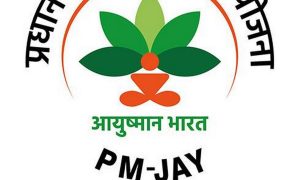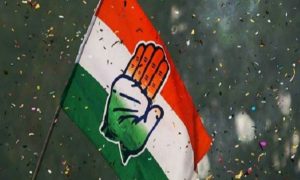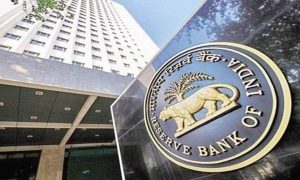Maximizing tax refunds is not difficult if you are aware of certain basic concepts.
There’s considerable buzz about maximising tax refunds in India. There’s nothing amiss in aiming to save money, which you can achieve by ensuring you receive all the tax benefits you’re entitled to. Your proficiency in assessing different aspects of tax calculation can lead to a larger refund.
Also Read- Form 26AS Discrepancy: Here’s What To Do If TDS Data Is Mismatched
Availing of necessary deductions and exemptions
Taxpayers should use all available deductions and exemptions to reduce their tax liability. Examining the Income Tax Act is essential for comprehending the deductions and exemptions accessible to you while filing your Income Tax Return (ITR) in India. The deductions and exemptions vary based on your category whether you are a salaried individual, pensioner, or self-employed individual.
Read More: ITR Filing: Here’s how senior citizens can benefit from income-tax deductions
Deductions under Section 80C
Several deductions are encompassed within Section 80C of the Income Tax Act in India. This provision enables you to claim deductions for various investments and expenses, thereby, reducing your taxable income and potentially decreasing your tax liability. Here’s an overview of the deductions available to you:
Public Provident Fund: The Public Provident Fund (PPF) contributions are deductible under Section 80C. PPF is a well-liked long-term investment option because it provides tax benefits and competitive interest rates.
Equity-Linked Savings Schemes: Section 80C allows for the tax deduction of investments made in equity-linked savings schemes (ELSS), a type of equity mutual fund. Compared to traditional options like PPF, ELSS has the potential to yield higher returns, but it is more susceptible to market risk.
National Pension System: Section 80C allows contributions to Tier-I National Pension Scheme (NPS) accounts to be deductible. With tax breaks available on contributions, investment growth, and the maturity amount, NPS is a long-term retirement savings plan.Life insurance premiums: Subject to certain limitations, Section 80C allows you to deduct the premiums you pay for life insurance policies (for you, your spouse, or your dependent children).
Tuition fees: For up to two children (including legally adopted children) enrolled full-time in any school, college, university, or other educational establishment in India, Section 80C permits the deduction of tuition costs. There is a cap on the amount that can be withheld for further education outside of India.
The combined maximum limit for deductions under Section 80C for the fiscal year 2023–2024 (AY 2024–2025) is ₹1.5 lakh. All of the aforementioned investments and other Section 80C deductions are subject to this restriction.
Read More: Filing ITR for FY23-24: Check out the key deadlines for different taxpayers
Deductions under Section 80D
You can deduct the premiums for your family, yourself, and, in certain cases, your dependent parents from your income tax under Section 80D of the Income Tax Act of India. The following are eligible to claim a deduction under this provision.
Individuals: Paying health insurance premiums for oneself, one’s spouse, and one’s dependent children can be written off by an individual.
Seniors (those over 60): There is a higher deduction cap for seniors. In addition, they are eligible to deduct the costs of their parents’ health insurance premiums (up to age 80).
Premiums paid for health insurance policies provided by recognised insurance firms in India are tax deductible. This usually comprises individual health insurance policies, family floater plans, and critical illness plans. If your health insurance policy covers hospitalisation for Ayurvedic treatment, the premiums are also deductible under Section 80D.
Depending on your age and the person you are insuring, the maximum deduction limit under Section 80D for medical insurance premiums varies:
Individual (below 60 years old): ₹25,000 (with the deduction for annual physicals).
Individual (above 60 years of age): ₹50,000 (with the deduction for annual health examinations).
Parents of senior citizens (up to 80 years old): The senior citizen is eligible to receive an additional ₹25,000 (or ₹50,000 if they are over 80 years old) if they pay for their parents’ health insurance.
The deduction limit for preventive health check-ups is ₹5,000 per financial year, included within the overall limits mentioned above. While you can claim deductions for multiple health insurance policies, the total deduction cannot exceed the specified limit.
The documents needed to claim a deduction under Section 80D include:
- Receipts or certificates for the medical insurance premiums paid.
- Proof of relationship with the parents, if claiming a deduction for their medical insurance (for senior citizens).
Consider opting for a family floater health insurance plan to cover all family members under a single premium, potentially maximising your deduction. If you are a senior citizen and have dependent parents, ensure you pay their health insurance premiums to claim additional deductions. Remember, the deduction applies to premiums paid, not the total sum insured.
Read More: Incorrect ITR Form, Wrong Bank Details: 10 Mistakes You Should Avoid While Filing Income Tax Return
Deductions under Section 24
You can lower your taxable income and, consequently, minimise your tax payment by claiming a deduction for home loan interest under Section 24 of the Income Tax Act of India.
Under this section, the following types of home loans are deductible:
- Loans taken out for buying, developing, fixing, or reconstructing a home.
- Loans taken out from authorised financial institutions, banks, or mortgage lenders.
The type of property and the loan’s original date determine the maximum deduction limit for interest paid on a home loan under Section 24.
Self-occupied property: Every fiscal year, self-occupied property costs ₹2 lakh (as of AY 2024–25).
Let-out property: There is no cap on the amount of interest that can be deducted from the mortgage.
The interest paid on a home loan during pre-construction may be written off, but only if it is done so in five equal instalments starting in the year the property is prepared for occupancy. Each co-owner may be eligible for a proportionate deduction based on their share of the loan repayment if the home loan is held jointly. Only the interest portion of the EMI paid on the home loan is eligible for deduction. Under certain circumstances, the principal repayment amount may be claimed under Section 80C but is not deductible under Section 24 of the Income Tax Act.
Available exemptions under various sections
The House Rent Allowance (HRA) and Leave Travel Allowance (LTA) exemptions can help reduce your tax burden in India:
House Rent Allowance: Provided by some employers to help offset rent costs, a portion of this allowance is exempt from tax under Section 10(13A) of the Income Tax Act. The exemption is the minimum of the following three amounts:
- Actual HRA received from your employer.
- 50% of your basic salary (if you live in a metro city) or 40% (for non-metro cities).
- Actual rent paid minus 10% of your basic salary.
To qualify for HRA exemptions, you must meet certain conditions:
- You must be paying rent for a separate accommodation.
- You need to have rent receipts in your name.
- In some cases, a rental agreement may be required.
Leave Travel Allowance: Some businesses provide LTA to help cover travel expenses incurred while on leave for you and your family. Section 10(5) of the Income Tax Act provides a limited exemption for LTAs. The exemption limit is the least of the following:
- Actual travel expenses incurred (with bills for evidence).
- According to income tax guidelines, the journey’s airfare should be in economy class.
- The amount approved by your employer for LTA.
The prerequisites for availing of this exemption are:
- The travel must be done within India.
- The exemption applies only to leave-related travel, not business travel.
- You can claim the exemption for two journeys within four years. The current block year spans 2022 to 2025.
Also Read– IPO listing: Kronox Lab Sciences share price debuts at ₹165, a 21% premium to issue price
Ensure that Form 26AS/AIS/TIS is reconciled
Your tax refund, which is usually given for excess tax paid via Tax Deducted at Source (TDS) and Tax Collected at Source (TCS), may be impacted by discrepancies between Form 26AS and AIS. Your refund amount might be reduced if the TDS/TCS details on your Form 26AS (tax credit statement) don’t match the information in the Annual Information Statement (AIS).
The best strategy is to identify the source of the error.
AIS error: If you feel that the AIS contains incorrect information, please report feedback directly to the AIS portal for correction.
Form 26AS error: If the discrepancy is caused by Form 26AS, tell your deductor (employer, bank, etc.) and ask them to file a revised TDS return.
Always reconcile TDS/TCS amounts on Form 26AS and AIS before completing your tax return. Keep detailed records, such as bank statements, salary stubs, and investment documents, to back up your claims in case of discrepancies.
Read More: D-Street At Record High: Sensex At 77,000; Nifty Above 23,400 For The First Time
File your ITR on time
It’s crucial that you file your income tax return (ITR) on time. The following are some advantages of filing your ITR by the deadline of July 31, 2024, for the fiscal year 2024–2025:
Quicker processing: If you file early, your ITR will be processed more quickly, which could lead to a quicker tax refund, if one is due.
Prevent interest and fines: The Income Tax Department may impose interest and penalties on you if your ITR is filed after the deadline.
Losses to be carried over: If you file on time, you can reduce your future tax bill by carrying over business losses and crediting them against future revenue.
Available exemptions under various sections
The House Rent Allowance (HRA) and Leave Travel Allowance (LTA) exemptions can help reduce your tax burden in India:
Processing loans: When applying for a loan, a timely filed ITR may be helpful since it shows banks and other financial institutions that you have good financial habits and that you pay your taxes.
Visa applications: When applying for a visa, some countries ask to see a copy of your ITR. You can expedite the process by filing your ITR on time.
To guarantee a smooth ITR filing process, consider the following suggestions:
Collect all necessary documentation: Organise your wage slips, Form 16 (if applicable), investment proofs, bank statements, and other pertinent paperwork for quick reference.
Choose the correct ITR form: Choose the proper ITR form based on your income and filing category.
Use electronic filing: Filing your ITR electronically saves time, is more convenient, and provides for easier refund processing.
Review before submission: Before submitting your ITR, carefully inspect it for errors or inconsistencies.
By submitting your ITR on time and following these guidelines, you can ensure a smooth and quick tax filing procedure.
Read More: Stocks To Watch: Adani Green, Tata Motors, Bajaj Finance, RVNL, Lupin, And Others
Bank account information verification
Validating your bank account and providing precise information is critical to receive a seamless and timely income tax return. The verification process confirms that the bank account associated with your Permanent Account Number (PAN) is valid for receiving the reimbursement. You can pre-validate your bank account on the Income Tax Department’s e-filing portal by providing your PAN, name, and mobile number.
When filing your tax return, double-check your bank account details (account number and IFSC code). Any mismatch between the information supplied in the return and your real bank account can cause delays or rejection of the refund.
If you’re an employee, contemplate modifying your tax withholding at the source by submitting Form 16 to your employer. For self-employed individuals, make advance tax payments throughout the year to prevent a substantial tax bill at filing time. Remember to retain receipts, bills, and investment documents to substantiate your deduction claims in case of discrepancies with the tax department. Opting for e-verification is the quickest method to authenticate your return and hasten the processing of your refund.
Consult a tax advisor if your tax situation is complicated. Above all, make sure you’re claiming all the benefits you’re eligible for by staying current on tax laws. You can make better decisions, file your taxes more accurately, and possibly even get a bigger tax refund in India by putting these strategies into practice.
The best strategy is to identify the source of the error.
AIS error: If you feel that the AIS contains incorrect information, please report feedback directly to the AIS portal for correction.
Form 26AS error: If the discrepancy is caused by Form 26AS, tell your deductor (employer, bank, etc.) and ask them to file a revised TDS return.
Always reconcile TDS/TCS amounts on Form 26AS and AIS before completing your tax return. Keep detailed records, such as bank statements, salary stubs, and investment documents, to back up your claims in case of discrepancies.





































